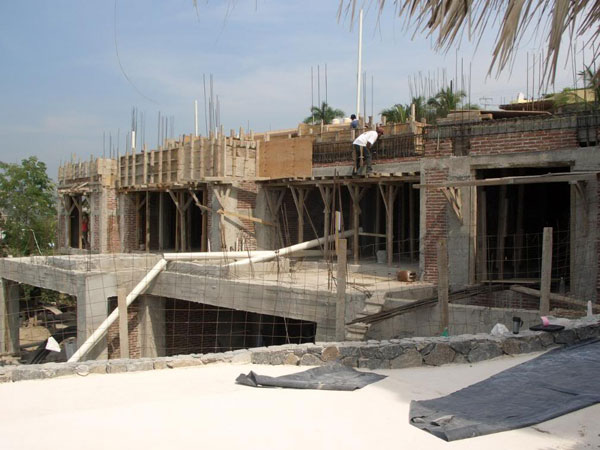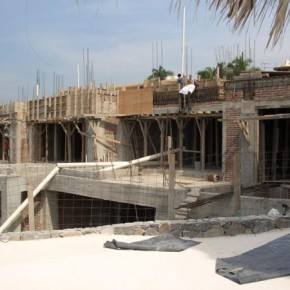Assuming that the proper paperwork for your construction project (license, permits, insurance, etc) has been processed and approved, you are now ready to see some ground-breaking work begin. Here we’ve outlined the general steps you’ll encounter once the construction phase of your project gets underway. Having a better understanding of the overall process will help you manage your expectations and hopefully give you some piece of mind as your construction project progresses.
Foundation & Framing
The first of your ground-breaking work will be concentrated on the construction of the foundation, which, once completed will serve as the basic footprint, defining the layout of your new home or condo.
Basic electrical and plumbing installations are laid throughout; the skeleton of your home is constructed, taking shape as walls, arches, entryways, ceiling, stairs and any structural elements. Your home’s framing is also laid, deriving much of its stability and strength from the very fact that it rests upon a properly-installed foundation.
Mechanical, Electrical and Plumbing
Mechanical “roughs”; electrical wiring, plumbing, home cooling system, cable & telephone installations are completed. Pipes and wires are still exposed, as there are a few more stages before the interior is complete. It’s important during this phase to check and double check the work being done. Because once the walls are sealed, these installations become much more difficult and expensive to access. An engineer should also be on site to inspect all of the installation work.
Insulation & Sheetrock
As homes in this region of Mexico are rarely treated with insulation, the next step towards a finished interior is the application of drywall/ sheet rock, which serves as interior walls & ceiling material.
Once applied, your interior will begin to take on more of a finished form, allowing you to envision the layout of each room and if you haven’t already, begin to think about furnishings and decor. Here is also where you can test color samples, textures and play around with different wall coverings.
Exterior & Landscaping
Exterior finishes such as roofing and facade, along with any trim or coverings (palapa, pergola, overhang, etc) are nearing, completion. Decks, terraces, walkways, fountains and other external elements are underway. If you are building a pool, this is likely when the process will begin. Landscaping elements such as trees, flowering bushes and grass are added.
Interior Finishes
In this phase, all the final details are taken care of, including installation and testing of electrical, mechanical and plumbing systems and the installation of doors, windows, floor coverings, counter tops, cabinets, tiles, appliances, mirrors, lights, faucets and fixtures.
This is probably the most exciting and involved portion of the construction process, as your home is finally ready for the finishing touches. This is the perfect opportunity to get involved with an experienced professional who can help you furnish and decorate according to your taste, budget and lifestyle.
Sealing Gaps are sealed from the inside out and a layer of waterproofing is applied to the exterior. This will prevent leaks and will also protect your home from humidity and heavy rains during the wet season.
Cleanup & Walk-through
Any remaining construction materials and rubbish are removed and the area is cleaned and ready for inspection. It is recommended that you perform a walk-through inspection of your home with your architect/builder to allow time to fix any problems you find.
During the walk-through you will have a chance to ask questions about the mechanical systems and appliances. At this time, minor repairs, such as paint touch-ups can be requested. Be sure to do a follow- up after repairs or fixes have been made to confirm that everything is as you want it.
Warranty Period
This period can vary, but generally extends a year or more after the closing. The warranty should specifically reference what kind of problems the builder is responsible for and the builder should let you know what to look out for during the warranty period.
Now that you have an idea of what to expect from the construction process, here are a few things to keep in mind; You will be asked to make decisions early in the construction process. This is because time is needed to order and receive materials and also because some units are too large to install in the later stages of construction. Each stage of the construction process has an approximate duration that builders strive to meet. However, a number of factors outside of the builder’s control, such as adverse weather conditions and availability of labor and materials, can extend these durations. Keep in touch with your builder or construction manager, ask questions early and stay informed about the status of your building project.
- Construction
- Bathroom construction






